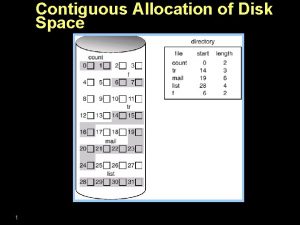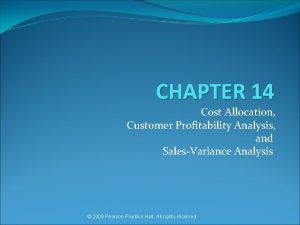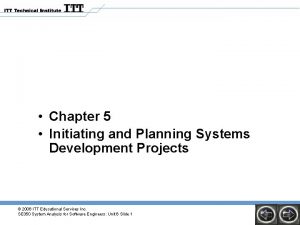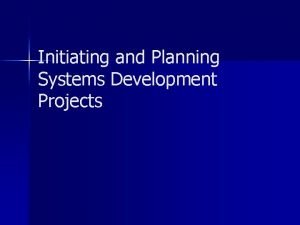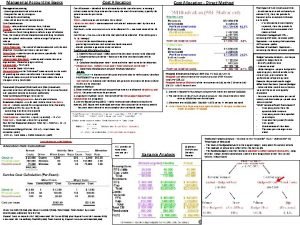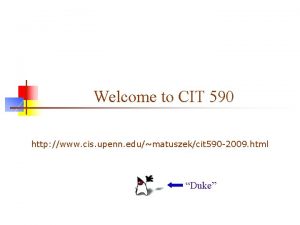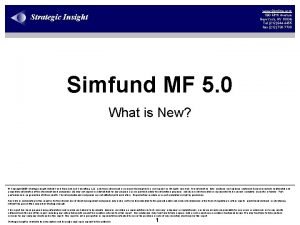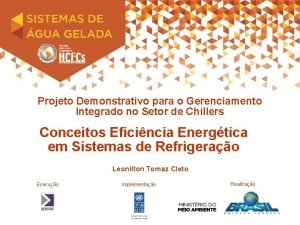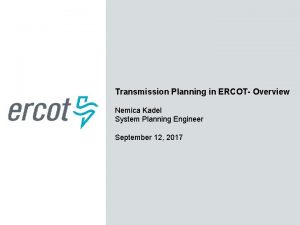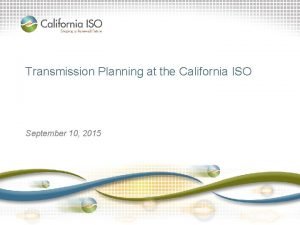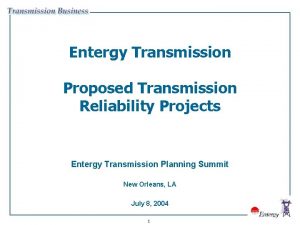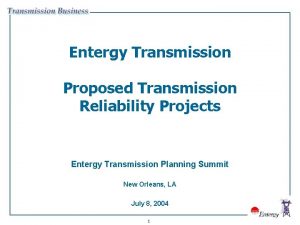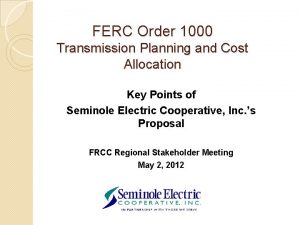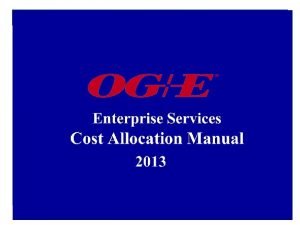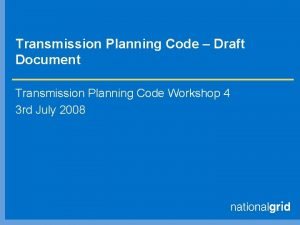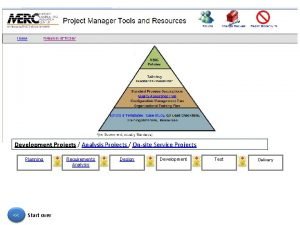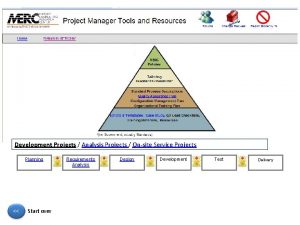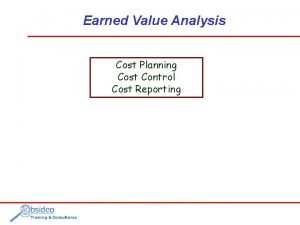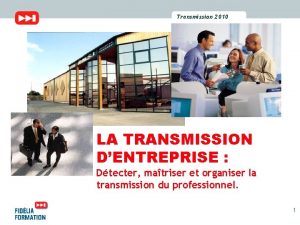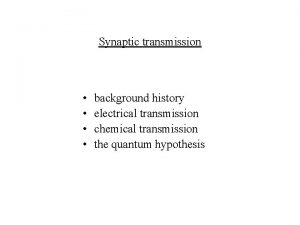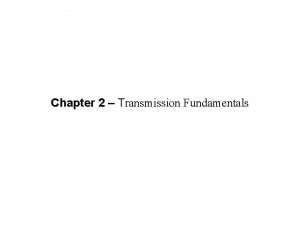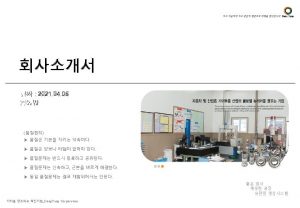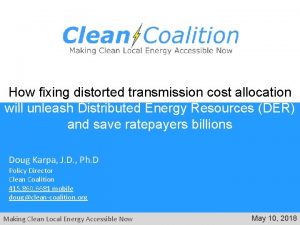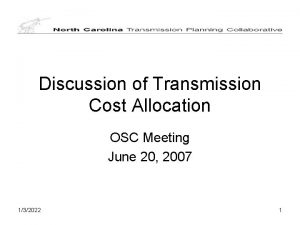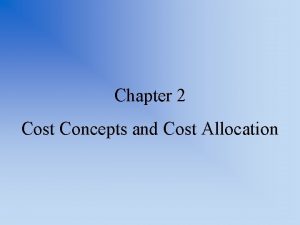EE 590 Transmission Planning Projects and Cost Allocation









































- Slides: 41

EE 590 Transmission Planning Projects and Cost Allocation Ming NI Economic Studies, Midwest ISO

Transmission Planning Projects n Reliability Projects: Identified either in the periodically performed Baseline Reliability Study, or in Facilities Studies associated with the request processes for new transmission access. Ø Baseline Reliability Projects: Network upgrades identified in the base case as required to ensure that the Transmission System is in compliance with applicable reliability standards. Ø Transmission Access Projects • • Generation Interconnection Projects Transmission Delivery Service Projects 2

Transmission Planning Projects n Economic Project (Regionally Beneficial Projects) Bring economic benefits to the region. Need to pass the Benefit/Cost test. 3

Why Cost Sharing n FERC Order 890 issued in early 2007 n Require compliance with nine principles Ø Ø Ø Ø Ø Coordination Openness Transparency Information Exchange Comparability Dispute Resolution Regional Participation Economic Planning Studies, and Cost Allocation 4

MISO Reliability Project Cost Allocation (RECB I) 5

RECB I Principles n n n Load growth driven projects in one zone (utility) can benefit users in another Lower voltage projects have more localized benefits than higher voltage - especially within a large geographic area RTO Higher voltage projects have at least some effect on all grid users – but large geographic area of RTO must be considered New generator driven transmission projects are in-part caused by the generator, but in-part benefit more than just the generator or his customer New transmission for specified transmission service use (point to point requests) can be targeted to the requesting customer 6

BRP Project Cost Allocation n BRP: Allocation mechanism: – 345 k. V and above: • 20% of cost Postage Stamped across footprint • 80% allocated to specific zones based on relative impact of project on zones • Measure of impact is sum of Line Outage Distribution Factor (LODF)*Line Length on all other lines (branches) in MTEP model – Below 345 k. V and above 100 k. V: • 100% allocated to specific zones based on relative impact of project on zones • Measure of impact is sum of Line Outage Distribution Factor (LODF)*Line Length on all other lines (branches) in MTEP model 7

TAP Project Cost Allocation n Generator Interconnection Projects • 50% allocated to Interconnection Customer • 50% allocated to zones by same mechanism as BRP n Point-to-point Transmission Service Projects are directly assigned to requesting customer 8

MISO Economic Project Identification and Cost Allocation (RECB II) 9

Qualifying Tests n Project Cost > $5 million n And project voltage is >= 345 k. V n And the project is not exclusively a Baseline Reliability Project or a New Transmission Access Project n If a project is both a BRP and a RBP, allocated as RBP 10

Benefit Metric § Benefit Metric is calculated on region level (MISO East, Central and West Region). § For each hour, calculate the region’s Load Cost Saving, and region’s Adjusted Production Cost Saving. Ø Region’s Load Cost Saving: is the change in load energy payment (Load * Load LMP) Ø Region’s Adjusted Production Cost Saving: is the change of Region’s Adjusted Production Cost, which equals: Region’s Production Cost (fuel costs, variable O&M costs and emissions costs) + Region’s Purchase * Region Load Weighted LMP (if it purchase at that hour) - Region’s Sale * Region Generation Weighted LMP (if it sales at that hour) § Region’s Annual Benefit = 70% * Region’s Annual Adjusted Production Cost Saving + 30% * Region’s Annual Load Cost Saving 11

Study Year § MISO Tariff Language: “minimum of 10 years of benefits with a maximum 20 year horizon model” § For a project with ISD of 2011, we will run PROMOD for: the in service year (2011), 5 years after (2016) and 10 years after (2021). For the years between, these 3 years, we will use the linear interpolation based 3 years values. 12

Benefit/Cost Ratio § Present value of MISO’s annual benefit (sum of regions’) for the first 11 years (2011 to 2021 if ISD is 2011) of project life compared to present value of annual project cost for first 11 years of project life § The threshold B/C ration increases linearly with the time until planned in-service date. 13

14

Cost Allocation § § Twenty percent (20%) of the Project Cost of the Regionally Beneficial Project shall be allocated on a system‑wide basis to all Transmission Customers and recovered through a system‑wide rate. Eighty percent (80%) of the costs of the Regionally Beneficial Projects shall be allocated on a sub rgion‑wide basis to all Transmission Customers in each of the three defined Planning Sub Regions. The region with negative total NPV benefit will not share any portion of these 80% cost. § § Example 1: Total NPV Benefit: East: M$100; Central: M$200, West: M$300 Then Cost Allocation: East: 16. 67%, Central: 33. 33%, West: 50% Example 2: Total NPV Benefit: East: M$-100; Central: M$200, West: M$300 Then Cost Allocation: East: 0%, Central: 40%, West: 60% 15

16

PJM Reliability Project Cost Allocation 17

Cost Allocation Method n For • 100% of project cost is regionally allocated to PJM zones based on loadratio share n For • projects >= 500 k. V: projects < 500 k. V: Use the DFAX (Distribution Factor) Method 18

Basic Concepts n DFAX: DFAX = (After-shift power flow – pre-shift power flow) / Total amount of power shifted = Modeled incremental megawatt transfer to a given Load Deliverability Area Pre-shift power flow = Megawatt flow over the constrained transmission element before the incremental megawatt transfer After-shift power flow = Megawatt flow over the constrained transmission element after the incremental megawatt transfer n Capacity Emergency Transfer Objective (“CETO”): Transfer limitation into the LDA. 19

Example 20

Example (Cont’) 21

Example (Cont’) 22

Example (Cont’) 23

Example (Cont’) 24

PJM Economic Project Identification and Cost Allocation 25

Process Overview Annual Benefit Metric Annual Benefit = (. 7)(∆System Production Cost)+(. 3)(∆Load Energy Payment) – ∆System Production Cost is change in system generation variable cost (fuel costs, variable O&M costs and emissions costs) associated with total PJM energy production – ∆Load Energy Payment is change in net load energy payment (change in gross load payment minus change in transmission right credit) • For projects that have costs allocated regionally (500 k. V and up), the load energy payment for all PJM zones is considered • For projects that have costs allocated using a flow-based methodology (below 500 k. V) , the load energy payment for only those PJM zones that show a decrease in load energy payment is considered 26

Process Overview (cont. ) Simulation/Model Details • • Annual market simulations made with and without upgrade for future years 1, 4, 7 and 10 (current year (cy), cy+3, cy+6 and cy+9) Annual benefits within the 10 -year time frame for years which were not simulated interpolated using these simulation results Annual benefits for years beyond the 10 -year simulation time frame based on an extrapolation of the market simulation results for years 1, 4, 7 and 10 A higher-level annual market simulation made for future year 15 (cy+14) to validate the extrapolation results and extrapolation of annual benefits for years beyond the 10 -year simulation time frame may be adjusted 27 accordingly

Process Overview (cont. ) Cost/Benefit Analysis • Present value of annual project benefit for first 15 years of project life compared to present value of annual project cost for first 15 years of project life • Project is considered economic and included in RTEP if B/C ratio exceeds 1. 25: 1 28

Example of Benefit Calculation for Single Year Annual Benefit Metric Calculation Benefit = (. 7)($153. 3 M) + (. 3)(-83. 4) = $82. 3 M (for 500 k. V and above) Benefit = (. 7)($153. 3 M) + (. 3)($784, 7) = $342. 7 M (for below 500 k. V) 29

Example of Benefit Calculation for Single Year (cont. ) Note: On a total system basis, Delta Net Load Payment = Delta Gross Gen Revenue and Delta Congestion Costs = Delta FTR Credits therefore explicit calculation of FTR credits is not necessary in order to determine Delta Net Load Payments for entire system. 30

Annual Benefit Extrapolation 31

Annual Benefit / Annual Costs C/B analysis uses 15 years of project costs and benefits starting with project in-service year 32

NPV Analysis • Present value of annual project benefit for first 15 years of project life compared to present value of annual project cost for first 15 years of project life • Project is considered economic and included in RTEP if B/C ratio exceeds 1. 25: 1 B/C Ratio = 1, 731 / 1, 039 = 1. 66 > 1. 25 33

Cost Allocation Method n For • 100% of project cost is regionally allocated to PJM zones based on loadratio share n For • projects >= 500 k. V: projects < 500 k. V: Use the DFAX (Distribution Factor) Method 34

Cost Allocation Example 35

Cost Allocation Example (Cont’) 36

Cost Allocation Example (Cont’) 37

Cost Allocation Example (Cont’) 38

Cost Allocation Example (Cont’) 39

Cost Allocation Example (Cont’) 40

Cost Allocation Example (Cont’) 41
 Contiguous allocation vs linked allocation
Contiguous allocation vs linked allocation Cost allocation and profitability analysis
Cost allocation and profitability analysis Initiating and planning systems development projects
Initiating and planning systems development projects Crm vision statement examples
Crm vision statement examples Initiating and planning systems development projects
Initiating and planning systems development projects Cloud cost allocation
Cloud cost allocation Support department cost allocation
Support department cost allocation Cost allocation direct method
Cost allocation direct method Cost management in agile projects
Cost management in agile projects Industry parks projects in planning stage
Industry parks projects in planning stage Christianaudio (590)
Christianaudio (590) Penn cit
Penn cit Toefl level 2
Toefl level 2 The medieval church (590-1517 ce)
The medieval church (590-1517 ce) 590 ad
590 ad Cit 590
Cit 590 590 fifth avenue
590 fifth avenue Ahri
Ahri Schema assicurazione patente
Schema assicurazione patente 590 ad
590 ad 105 cmr 590
105 cmr 590 Cps 590
Cps 590 Cps590
Cps590 Cps 590
Cps 590 Cps 590
Cps 590 Cps590
Cps590 Cps 590
Cps 590 Cit 590
Cit 590 Aeroelasticity
Aeroelasticity Ercot transmission planning
Ercot transmission planning Caiso transmission planning
Caiso transmission planning Cost accumulation and cost assignment
Cost accumulation and cost assignment Cost accumulation and cost assignment
Cost accumulation and cost assignment Cost accumulation and cost assignment
Cost accumulation and cost assignment Cost accumulation and cost assignment
Cost accumulation and cost assignment Cost control and cost reduction difference
Cost control and cost reduction difference Standard costing definition
Standard costing definition Distinguish between average cost and marginal cost
Distinguish between average cost and marginal cost Cost control and cost reduction difference
Cost control and cost reduction difference Job order costing
Job order costing Ordering cost and carrying cost
Ordering cost and carrying cost Trade offs and opportunity cost
Trade offs and opportunity cost
